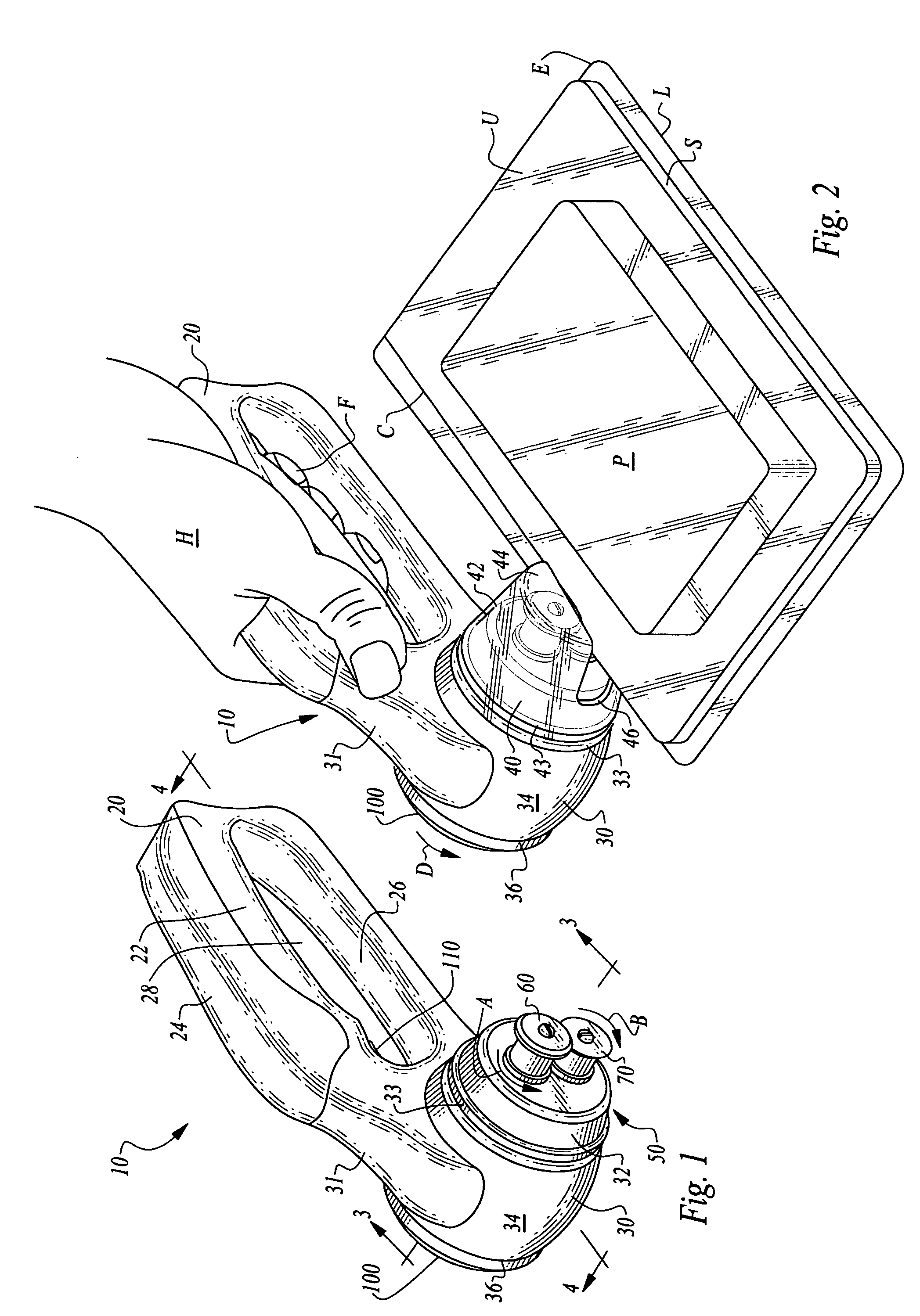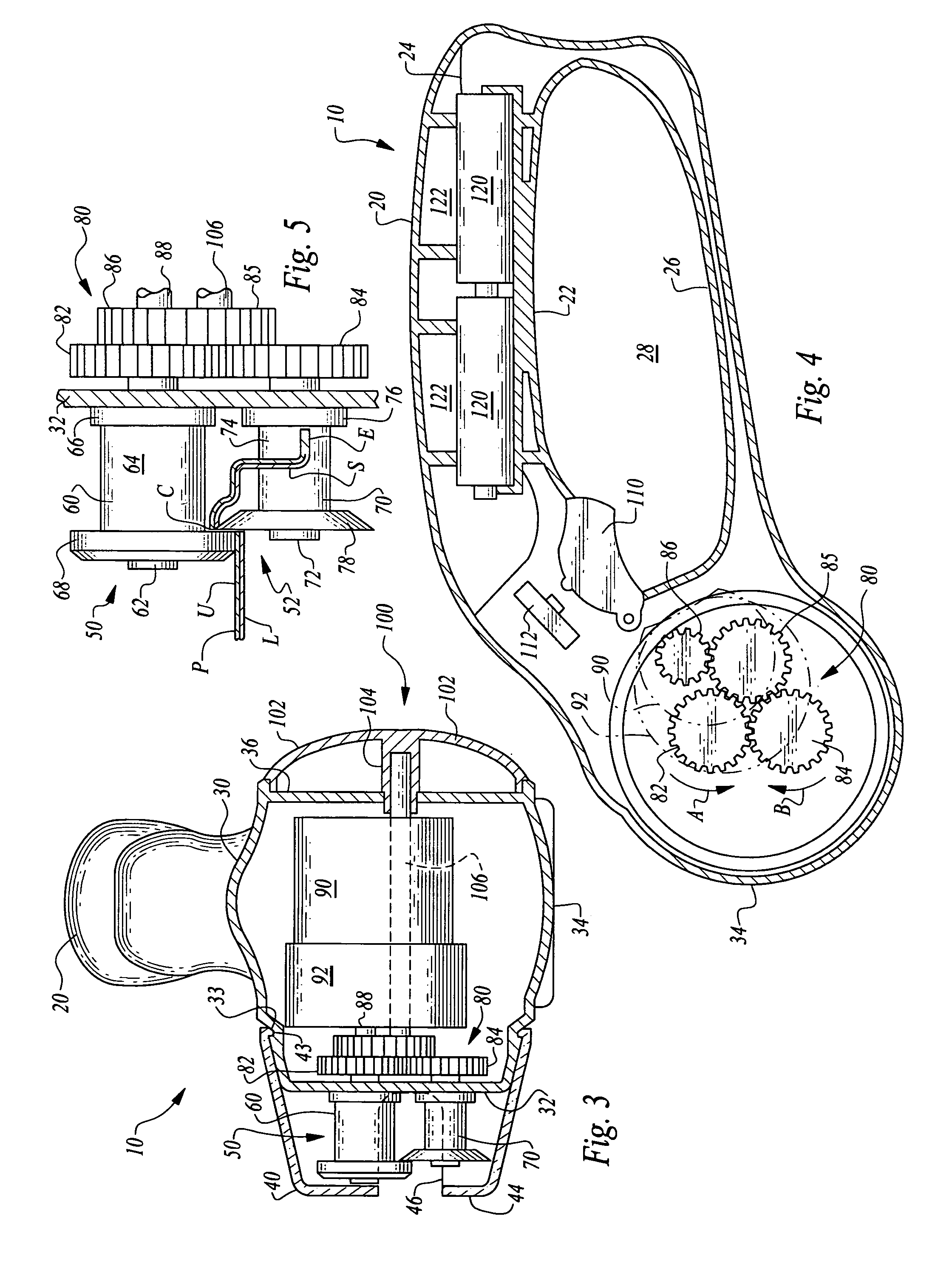Blister package opener
a blister package and opener technology, applied in the field of cutting tools, can solve the problems of two layers together, one packaging form, merchandise, and is exceptionally difficult to open, and achieve the effect of simple and reliable construction
- Summary
- Abstract
- Description
- Claims
- Application Information
AI Technical Summary
Benefits of technology
Problems solved by technology
Method used
Image
Examples
Embodiment Construction
[0027]Referring to the drawings, wherein like reference numerals represent like parts throughout the various drawing figures, reference numeral 10 (FIG. 2) is directed to an opener for opening a blister package P or other related package, or for otherwise cutting generally planar material. The opener 10 has a cutter pair 50 (FIG. 5) which receives an upper layer U and lower layer L of the package P within an engagement area 52 between the cutters 60, 70 (FIG. 1). The cutters 60, 70 act together to cut through an edge E of the packaging P and along a cut line C (FIG. 2). The cutting procedure occurs at a rate matching a rate of rotation of the cutters 60, 70 controlled by a motor 90 or a hand crank 100 (FIG. 3), such that relatively minimal forces are applied in a controlled fashion to open the blister package P or otherwise cut planar material.
[0028]In essence, and with particular reference to FIGS. 1 and 2, basic details of the opener 10 of this invention are generally described ac...
PUM
 Login to View More
Login to View More Abstract
Description
Claims
Application Information
 Login to View More
Login to View More - R&D
- Intellectual Property
- Life Sciences
- Materials
- Tech Scout
- Unparalleled Data Quality
- Higher Quality Content
- 60% Fewer Hallucinations
Browse by: Latest US Patents, China's latest patents, Technical Efficacy Thesaurus, Application Domain, Technology Topic, Popular Technical Reports.
© 2025 PatSnap. All rights reserved.Legal|Privacy policy|Modern Slavery Act Transparency Statement|Sitemap|About US| Contact US: help@patsnap.com



